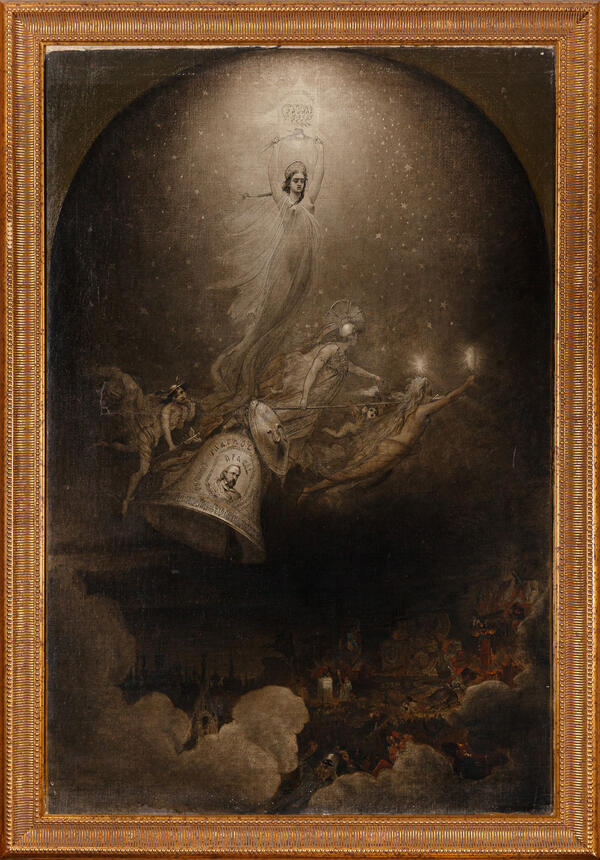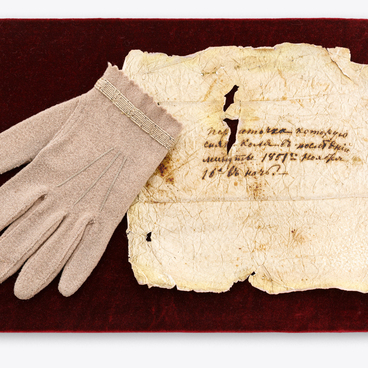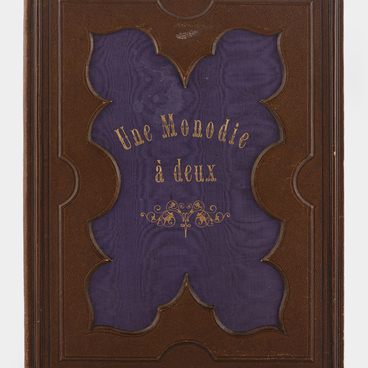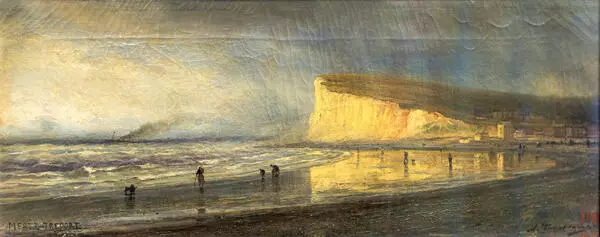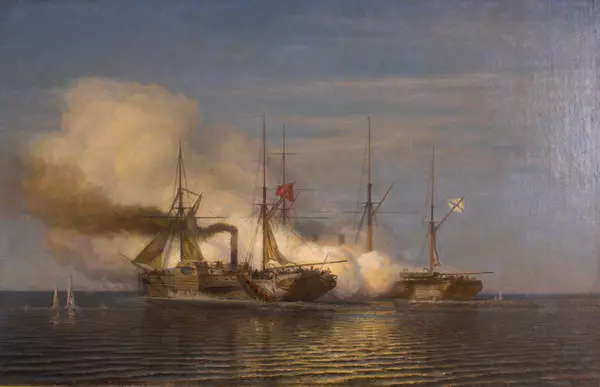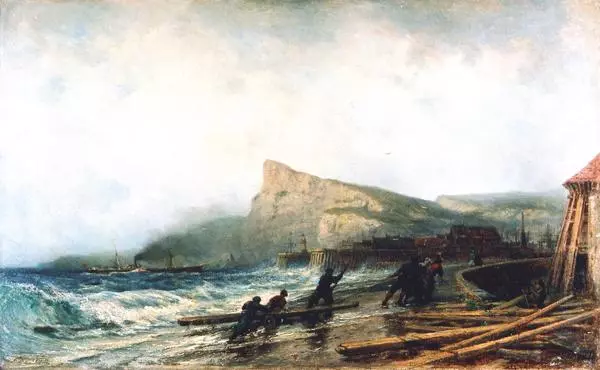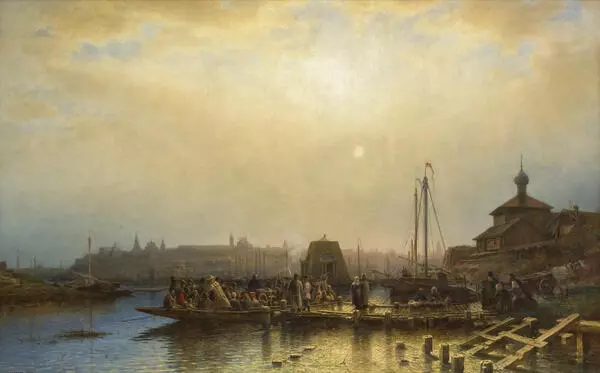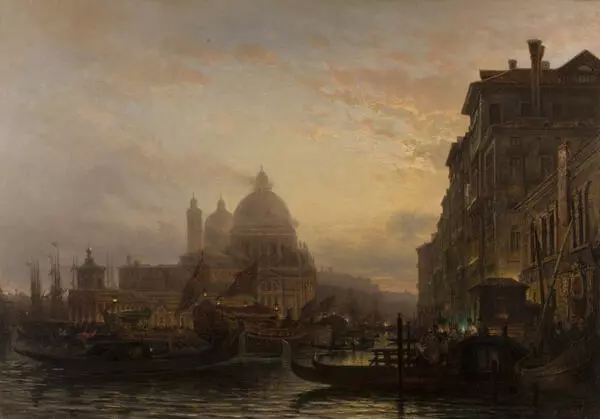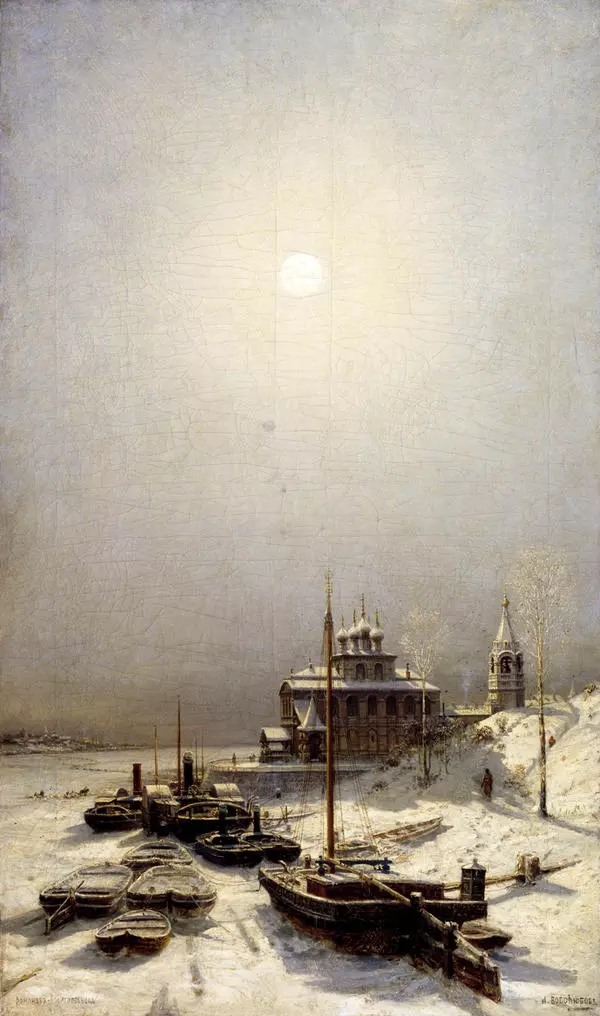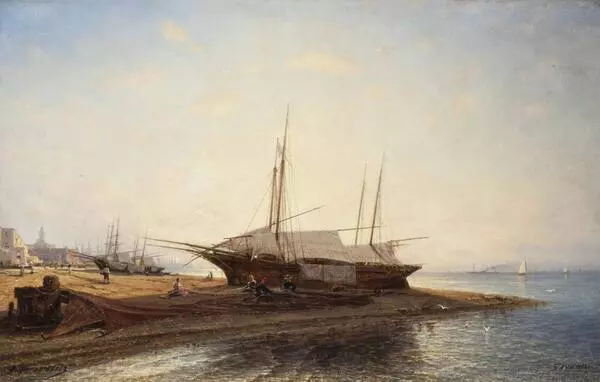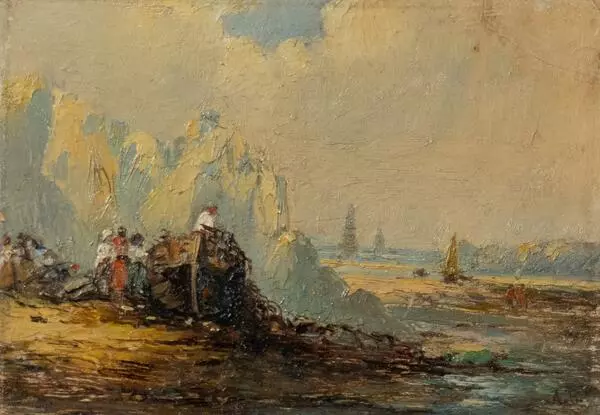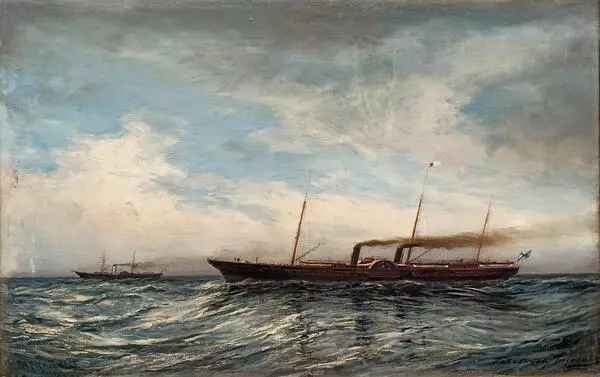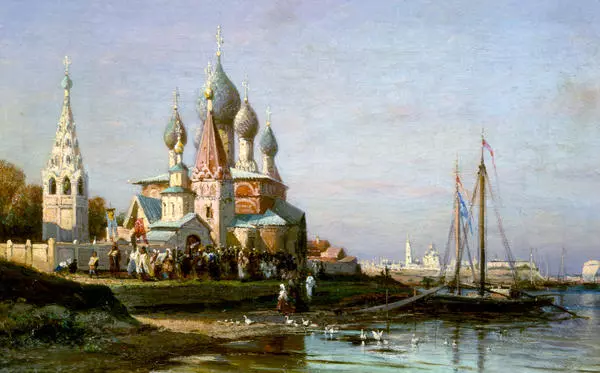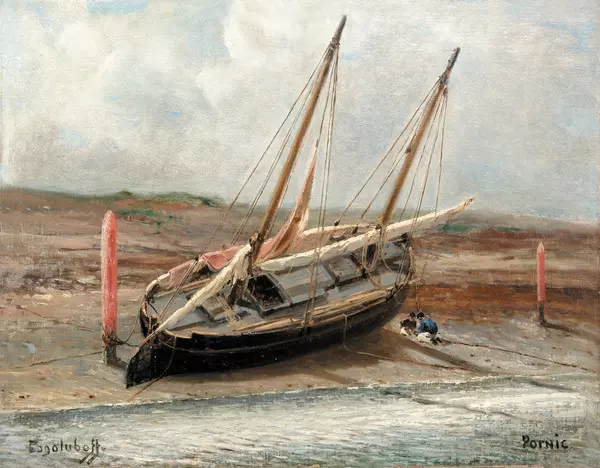In the 1850s, Alexander Herzen moved to London where he founded the Free Russian Press publishing house. This was the most fruitful period in his literary career, and it coincided with the start of the reign of Alexander II. The Russian emperor read the London publications of Alexander Herzen, and during his time, the magazine “The Polar Star” began to appear in Russia.
Alexander Herzen started publishing collections of “Voices from Russia”, and in 1857, “The Bell” was launched. The famous uncensored newspaper was initially published once a month, then twice a month, and between November 1861 and June 1863, three to four times a month. At one point, the circulation of “The Bell” was comparable to that of popular newspapers published in Russia. As a result, Herzen’s printing house was able to cover the costs of publication.
In 1860, the artist and member of the Academy of Arts, Alexey Bogolyubov, created an allegorical painting titled “The Apotheosis of ‘The Polar Star’ and ‘The Bell’”. In the center of the composition, there is a figure of Nemesis, the winged goddess of retribution, who punishes those who violate social and moral order. The face of the goddess resembles that of Alexander Herzen’s daughter, Natalya, who would later become the family historian and oversee the writer’s archives. In her outstretched arms, Nemesis holds the almanac “The Polar Star”. Below her, there is a bell with an image of Alexander Herzen as well as three rows of inscriptions that include, “Openness”, “Truth”, “Talent”, “Philosophy”, “Nobility and Resolution”, “Love and Courage”, “Subtlety”, “Impartiality”, “Activity”, “Bitterness”, “Poetry and Irony”, “Originality”, and “Self-Sacrifice”. Below, there are also figures of Alexander II, generals in masks, priests, and people listening to the sound of the bell. Alexey Bogolyubov presented the painting to Alexander Herzen the same year, in 1860. Prior to that, he had sent a photo of it which the writer called “terrible”. Still, he liked the painting itself.
In 1970, Serge Herzen, the writer’s great-grandson who lived in Switzerland, donated the painting to the future Alexander Herzen House Museum in Moscow.
The artist Alexey Bogolyubov was a representative
of a noble dynasty and grandson of Alexander Radishchev. In 1885, he initiated
the opening of the Radishchev Museum in Saratov that exists to this day.

